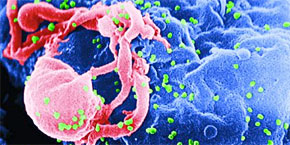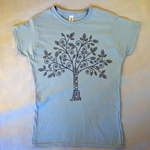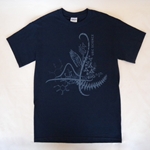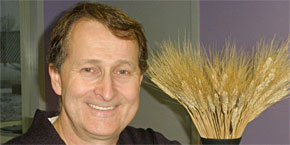| ISSUE 01, 2012 Events Family Science Weekend Research Diamond Taxis | Starving Hepatitis C | Largest Dark Matter Map Students Game Jam 2012 Shop Buy Science Swag Online Class Connections Alumnus Appointed to Order of Canada |
 |
UBC Science Connect |
| NEWS AND EVENTS FOR UBC SCIENCE ALUMNI | VIEW HTML VERSION |

|
UBC Researchers Use Google Earth
|


Enjoy FestEvolve, Family Science Days This Weekend
FestEvolve gets into full swing at the Beaty Biodiversity Museum, and UBC researchers are doling out free, hands-on science at the Vancouver Convention Centre:
Virus Outbreaks in the The Real Science of Alien Worlds Biodiversity Game: The Phylo Project Fisheries: Sustaining People and Oceans |
 |

Help Celebrate the Nature of Everything at Celebrate Research 2012
UBC Celebrate Research Week runs from March 2th to 9th this year, and features a variety of hosted discussion forums, poster sessions, seminars, open houses and symposia on relevant issues related to the outstanding research taking place at UBC and its partner institutions. We’ve outlined some of the UBC Science connections in this year's offerings, as well as some other noteworthy events. New Materials for a Better World The Microbiota in Health The Nature of Everything! |

Carbon Dioxide Gas Reaction Fuels 'Diamond Taxis' |
||
|
Diamond prospectors may have a fairly simple chemical reaction to thank for much of their industry's success, according to new findings from UBC researchers. Geologists have long known that diamonds are often embedded and transported upward to the Earth's surface by molten kimberlites. But kimberlites are dense, large rocks, and the question of how they erupt to the surface--sometimes in a matter of days from depths of 120 kilometres--has been a mystery. According to work published in Nature by UBC volcanologist Kelly Russell, that buoyancy may be in part driven by carbon dioxide oozing from the magma surrounding gems as they move upward. |
 |

In lab experiments, Russell and colleagues sprinkled a silica-rich mineral called orthopyroxene onto a molten, carbonate-rich rock designed to mimic kimberlites. The two substances reacted and began bubbling carbon dioxide in 20 minutes, providing new clues to how diamonds ascend to the surface. |

CS Students Jam at Global Video-Game Coding Marathon |
|

|
Almost 100 UBC Computer Science students faced off with Vancouver’s hottest young video-game talent at Global Game Jam 2012, part of a 48-hour world-wide programming marathon. The Jam is a semi-competitive, soft drink- and pizza-fuelled celebration that challenges coders to develop polished games in two days. Local industry luminaries reviewed the final results. The UBC Jam was the largest of 90 concurrent events being held worldwide. |

UBC Researchers Look to Starve Hepatitis C of Fat to Block Its Spread in the Liver |
||
|
A unique approach to treating Hepatitis C could lead to new therapy options for the 170 million people worldwide affected by this and other infectious diseases. UBC microbiologist François Jean and his team have developed an inhibitor that decreases the size of host fat droplets in liver cells, which stops HCV from multiplying and infecting other cells. "As HCV infects a person, it needs fat droplets in the liver to form new virus particles," explains Jean. "In the process, it causes fat to accumulate in the liver and ultimately leads to chronic dysfunction of the organ. Our approach would essentially block the lifecycle of the virus so that it can't spread and cause further damage to the liver." |
 |

According to Jean, HCV is one of a number of viruses that require fat to replicate in the human body. This new approach could lead to similar therapies for other related re-emerging viruses that can cause serious and life-threatening infections in humans, such as dengue virus. |

The Science Swag Online Shop |
|||

|

|

|

|
| Light blue women's. | Dark blue men's. | Water bottle. | Light blue men's. |

A Really Big Map of the Universe's Dark Matter |
||
|
The largest ever map of dark matter was unveiled by UBC and University of Edinburgh astronomers at January's meeting of the American Astronomical Society. The findings, presented by UBC's Ludovic Van Waerbeke, reveal a Universe comprised of an intricate cosmic web of dark matter and galaxies that spans more than one billion light years. An international team of researchers analyzed images of about 10 million galaxies in four different regions of the sky. They studied the distortion of the light emitted from these galaxies, which is bent as it passes massive clumps of dark matter during its journey to Earth. The light captured by the telescope images used in the study was emitted when the Universe was six billion years old--roughly half the age it is today. Galaxies included in the survey are typically six billion light years away. |
 |

"It's fascinating to be able to 'see' the dark matter using space-time distortion," says Van Waerbeke. "Knowing how dark matter is distributed is the very first step towards understanding its nature and how it fits within our current knowledge of physics." The project--the Canada-France-Hawaii Telescope Lensing Survey--uses data from the Canada-France-Hawaii Telescope Legacy Survey. |


Science Alumnus Appointed to Order of Canada
UBC Science alumnus David Northcott, who helped establish one of Canada’s first food banks, has been named to the Order of Canada. Northcott, who earned his Bachelors of Science degree from UBC in 1976, is executive director of Winnipeg Harvest, one of Canada's first food banks, which he helped build starting in 1985. He is also one of the founders of the national food bank structure and serves on the Food Banks Canada council. Northcott represented Canada as a member of the delegation at the United Nation's Second World Food Summit in 2002. He's among 66 new Order of Canada appointees who will accept their award at a ceremony later this year. The Order of Canada is one of our nation's highest civilian honours, and recognizes a lifetime of achievement and contribution to society. Northcott joins a growing list of UBC Science community members and researchers who have been recognized by the Order, including chemist David Dolphin, microbiologist Brett Finlay, and astronomer Jaymie Matthews. |
 |

Arsenic Life Skeptic Named to Nature's 2011 Top TenRosie Redfield, the UBC microbiologist who has been one of the most vocal critics of the NASA-funded 'arsenic-life' study, was named one of Nature's Ten People Who Mattered in 2011. In late 2010, Redfield began blogging about the study, published in Science. In the study, researchers claimed to have discovered bacteria that could incorporate arsenic into their DNA in place of phosphorus. Early this month, she posted results from attempts to validate the original study--offering a "clear refutation" of key findings from the paper. UBC Mathematics Welcomes New Head UBC Science Dominates Wesbrooks |

 | ||
You're receiving Science Connect because, as a UBC Science alumni or supporter, you've given the university permission to contact you. And while we hope you find our e-magazine interesting, we take your privacy seriously, and have made it easy for you to: | ||
 |
||

 |
| © 2012, UBC Faculty of Science | Privacy | Update your contact information |

